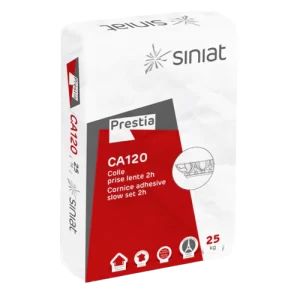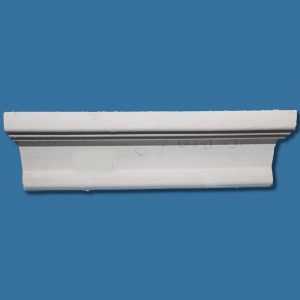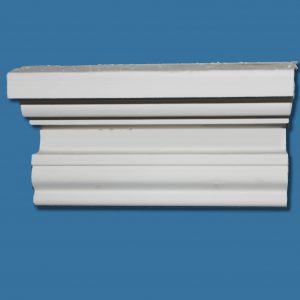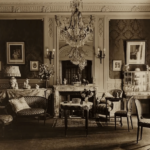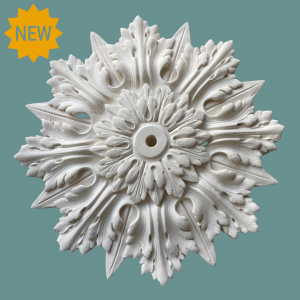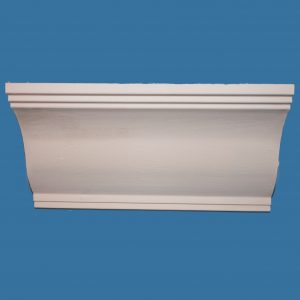The difference between traditional plaster cornice and modern coving products.
How many times have you used the term Astroturf when talking about fake grass? Well, AstroTurf is, in fact, a brand name and has become as common as other brands that are used to refer to household objects. Another example is the term Hoover, which is another brand name used to refer to all vacuum cleaners whether they are of the Hoover brand or not. How many of us say I’m going to Hoover as opposed to I’m going to vacuum…?
The same thing happened with coving. The cheap and mass-produced paper-coated strips sold by many DIY stores and builder’s merchants has led to most cornice being referred to as coving. The biggest difference is that proper cornice is made by master craftsmen using traditional plaster materials and methods, for example, here at Abby Mouldings, we manufacture cornice using traditional methods within our own workshop in Devon.
Coving originally referred to the uniform curved profile or shape of the cornice, the effect also known as a cavetto that has a ¼ sphere shape. The visual of this can be associated with the shape of how a cove on the coastline would appear on a map. Coving is usually uniform in shape and size, for example, it will protrude 100mm from the corner across the ceiling and 1oomm down the wall with a uniform concave shape.
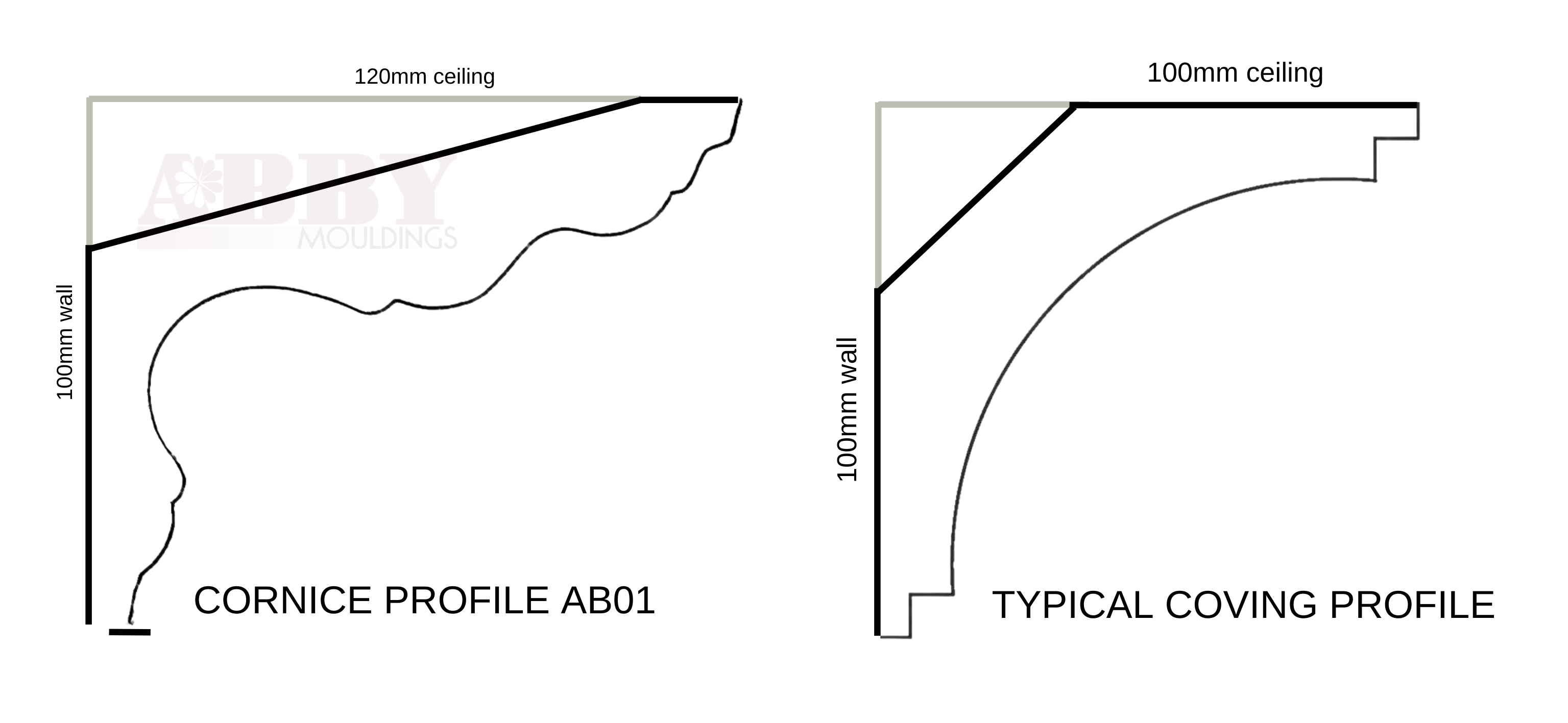
A typical coving profile along with a more ornate cornice profile
This type of simple coving was very popular post war as it was cheap, and mass produced in gypsum plaster. As it was so readily available and became a feature in most homes around this time, the term Coving became almost a household name and began to be used to refer to all types of mouldings used in this way, whether small and simple and mass produced, or larger and more ornate.
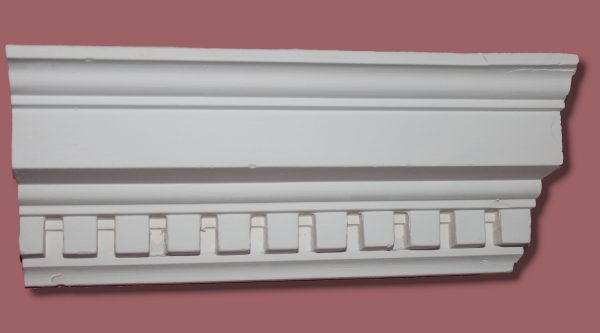
Dentil Style Plaster cornice
As well as being made using high-quality and traditional plaster and materials by master craftsmen, cornice, is in fact, much larger and more ornate than typical coving. Examples of this can be seen in many heritage and period properties today, for example, the beautiful dentil and egg & dart style cornice inspired by ancient Greek and Roman architecture and the big, bold and chunky geometric cornice popular in the Art Deco period.
We understand that coving is such a generic term used so widely in the modern language, that you may see some cornice across our site referred to as coving; However, all our cornice is made using those historically traditional methods and materials by our very own craftsmen here in Devon.
To view our range of plaster cornice, or coving if you prefer! Please click here to see the range and order online, or call us on 01626 830500 to chat to the team about your project.

